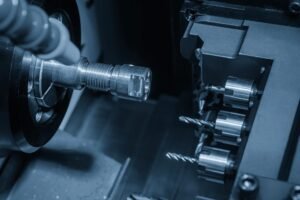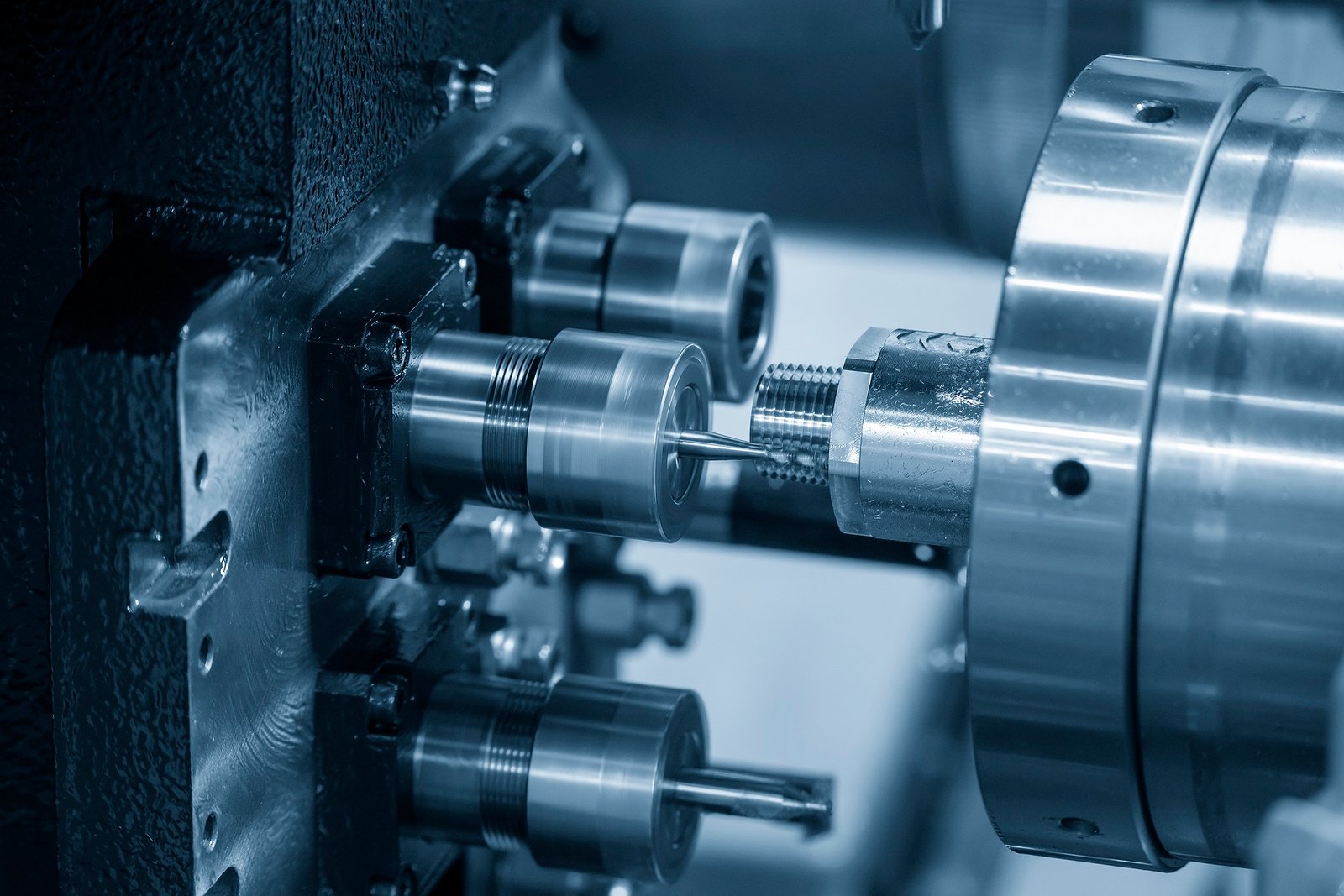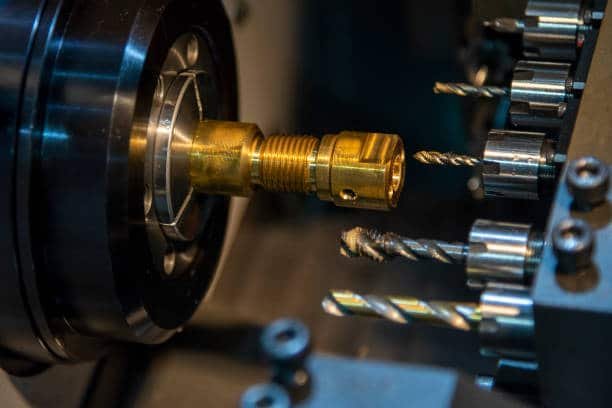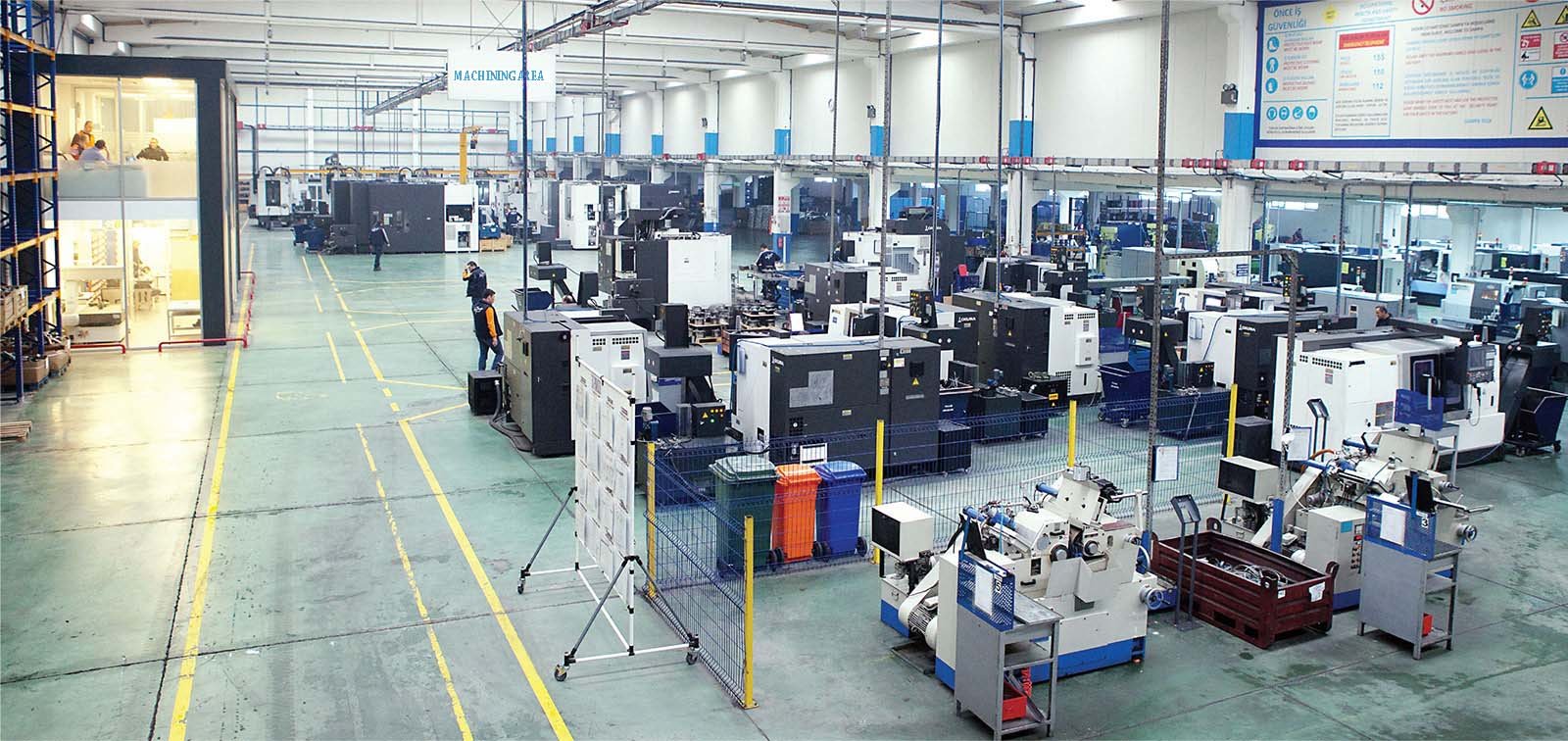If you are exploring the field of CNC Machining, you will likely come across terms such as 3-axis, 4-axis, and 5-axis. Each machining method has distinct characteristics. Today, MaTec Vietnam will help you distinguish between 3-axis, 4-axis, and 5-axis CNC Machining.
What Distinguishes 3-axis, 4-axis, and 5-axis
The primary difference between 3-axis, 4-axis, and 5-axis machining lies in the complexity of the movements that both the workpiece and the cutting tool can achieve relative to each other. The more intricate these movements are, the more complex the geometry of the final machined part can be.
3-Axis
3-Axis CNC Machining: The Basics and Beyond
Description
3-axis CNC machining is the simplest type of machining, where the workpiece is fixed in a single position. The spindle moves in the X, Y, and Z linear directions.
Applications
- Typically used for machining 2D and 2.5D geometry.
- Can machine all six sides of a part, but requires a new fixturing setup for each side, which can be expensive.
- In a single fixture setup, only one side of the part can be machined.
Capabilities
- Many complex and practical shapes can be manufactured, especially in a world-class CNC machining facility.
- Best suited for manufacturing planar milled profiles, drillings, and threaded holes in line with an axis.
- Undercut features are possible with the use of T-slot cutters and dovetail machining cutters.
Limitations
- Sometimes the designed feature cannot be manufactured by a 3-axis machine, or it might be more economically viable to machine with a 4-axis or 5-axis machine.
- Features on an angle to the X-Y-Z coordinate system are not possible, even if the feature itself is planar.
Angled Features
These are features machined at an angle to one of the X, Y, or Z axes. For example, a planar milled surface at 45° to the X-axis (rotation of the A-axis).
Compound Angle Features
- These are features machined at an angle to two axes. For example, a planar milled surface at a 45° angle to the X-axis and a 30° angle to the Z-axis.
Both angled and compound angle features cannot be machined by 3-axis CNC machines, making 4-axis or 5-axis machining necessary for such complex geometries.

4-Axis CNC Machining
4-axis CNC machining adds a rotation around the X-axis, known as the A-axis. Like in 3-axis machining, the spindle moves linearly along the X, Y, and Z axes. Additionally, the A-axis involves the rotation of the workpiece.
Typically, 4-axis machines are of the ‘vertical machining’ type, where the spindle rotates about the Z-axis. The fixture rotates on the A-axis while the workpiece is fixed on the X-axis. With a single fixture setup, four sides of the part can be machined.
Applications
- Used as a more cost-effective method for machining parts that are theoretically possible on a 3-axis machine.
- Eliminates the need for fixture changeovers, reducing costs and enhancing efficiency.
- Minimizes the risk of human error, ensuring high-quality machining without expensive quality assurance investigations.
- Maintains tighter tolerances between features on different sides of the part by removing inaccuracies due to re-fixturing.
Types of 4-Axis CNC Machining
Indexing 4-Axis CNC Machining:
- The A-axis rotates while the machine is not cutting material.
- After reaching the correct rotation, the machine applies a brake and resumes cutting.
Continuous 4-Axis CNC Machining:
- The machine can cut material simultaneously with the A-axis rotation.
- Allows for the machining of complex arcs, such as cam lobe profiles and helixes.
Capabilities
- Enables the machining of angled features that are not possible with a 3-axis machine.
- Allows a single axis of rotation per fixture setup, meaning all angled features must be oriented about the same axis, or additional fixtures must be used.
Advantages
- More economical and efficient compared to 3-axis machining for complex parts.
- Higher precision and reduced setup times.
- Improved ability to machine complex geometries and maintain tight tolerances.
4-axis CNC machining significantly enhances the capabilities of 3-axis machines by introducing rotational movement, making it ideal for more complex and precise machining tasks while reducing costs and setup times.
5-Axis CNC Machining: Unmatched Versatility and Precision
5-axis CNC machining machines utilize two of the three possible rotational axes, depending on the type of machine. These rotations occur either around the A-axis and C-axis or the B-axis and C-axis. The rotation can be performed either by the workpiece or the spindle.
Types of 5-Axis CNC Machines:
3+2 Axis Machines
- In 3+2 axis machining, the two rotational axes operate independently. This allows the workpiece to be rotated to any compound angle relative to the cutting tool, enabling complex features to be machined.
- Simultaneous rotation of both axes during machining is not possible.
- Capable of producing highly complex 3D shapes.
Fully Continuous 5-Axis Machines
- Fully continuous 5-axis machining can simultaneously rotate the two rotational axes while the cutting tool moves linearly along the XYZ coordinates.
- This capability allows for the creation of highly complex 3D shapes, including not only planar compound angled features but also intricate curved 3D surfaces.
- Provides the ability to produce parts that are typically reserved for molding processes.
Applications
- Ideal for manufacturing parts with highly complex geometries and intricate details.
- Widely used in aerospace, automotive, and medical industries for parts that require precise and complex machining.
Advantages
- Unmatched versatility in machining a wide range of shapes and surfaces.
- Higher precision and efficiency compared to machines with fewer axes.
- Reduces the need for multiple setups and fixturing changes, ensuring tighter tolerances and higher quality parts.
5-axis CNC machining offers unparalleled capabilities in producing complex and precise parts. Whether using 3+2 axis or fully continuous 5-axis machines, this technology allows for the creation of intricate geometries and high-quality finishes, making it indispensable in advanced manufacturing processes.

Conclusion
Overall, 3-axis machining is suitable for simpler, planar parts and is cost-effective for high-volume production. 4-axis machining adds an additional rotational axis, enabling more complex geometries and reducing setup times, making it ideal for parts that require machining on multiple sides.
5-axis machining offers the highest level of flexibility and precision, capable of producing intricate 3D shapes and complex curved surfaces, which is essential for advanced industries such as aerospace and medical device manufacturing.
Contact us today to learn how our state-of-the-art CNC machining services can transform your projects. Visit our website or give us a call to discuss your requirements and get a quote in here. Let MaTec Vietnam be your trusted partner in achieving the highest quality and precision in your manufacturing processes.


